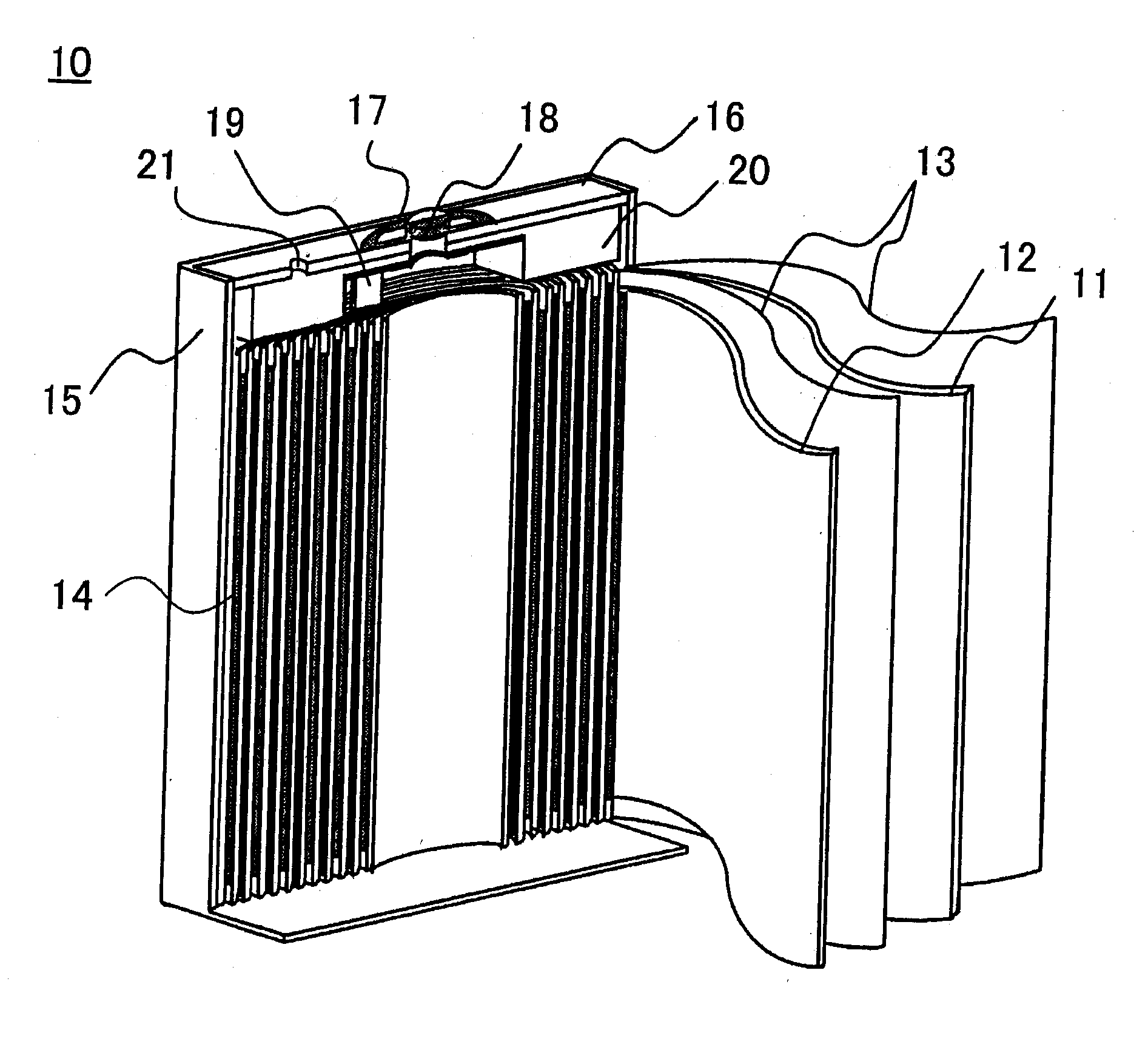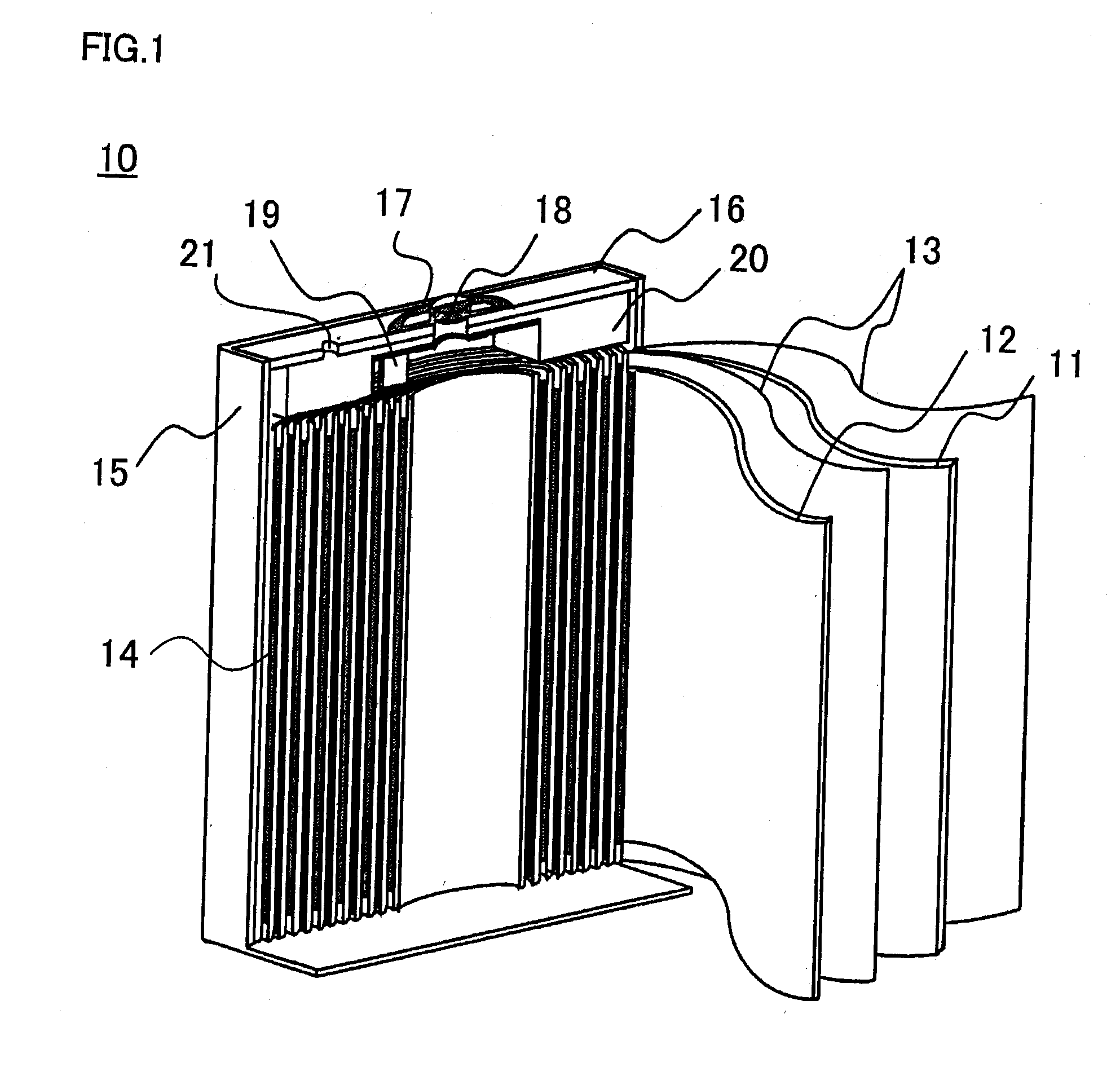Nonaqueous electrolyte secondary battery
a secondary battery and non-aqueous electrolyte technology, applied in the direction of non-aqueous electrolyte accumulator electrodes, cell components, electrical equipment, etc., can solve the problems of long life, high cost of cobalt, and the likely cause of structural deterioration of the positive electrode active material itself, etc., to achieve excellent initial efficiency, excellent properties, and high safety
- Summary
- Abstract
- Description
- Claims
- Application Information
AI Technical Summary
Benefits of technology
Problems solved by technology
Method used
Image
Examples
eleventh embodiments
First to Eleventh Embodiments
First to Tenth Comparative Examples
[0034]First, specific production methods of the nonaqueous electrolyte secondary batteries used in the First to Eleventh Embodiments and First to Tenth Comparative Examples are described.
Preparation of Positive Electrode Active Material
[0035]Different metal elements-added lithium cobalt compound oxide was prepared as follows. With respect to the starting material, as a lithium source, lithium carbonate (Li2CO3) was used and as a cobalt source, different metal elements-added tricobalt tetraoxide (CO3O4) was used. Among them, as different metal elements-added tricobalt tetraoxide, used was different metal elements-added cobalt carbonate produced by a method including: adding an acid aqueous solution containing respectively predetermined concentrations of zirconium (Zr) and magnesium (Mg) as different metal elements to an acid aqueous solution of cobalt, and mixing the resultant mixture; and precipitating cobalt carbonate ...
PUM
| Property | Measurement | Unit |
|---|---|---|
| electric potential | aaaaa | aaaaa |
| electric potential | aaaaa | aaaaa |
| electric potential | aaaaa | aaaaa |
Abstract
Description
Claims
Application Information
 Login to View More
Login to View More - R&D
- Intellectual Property
- Life Sciences
- Materials
- Tech Scout
- Unparalleled Data Quality
- Higher Quality Content
- 60% Fewer Hallucinations
Browse by: Latest US Patents, China's latest patents, Technical Efficacy Thesaurus, Application Domain, Technology Topic, Popular Technical Reports.
© 2025 PatSnap. All rights reserved.Legal|Privacy policy|Modern Slavery Act Transparency Statement|Sitemap|About US| Contact US: help@patsnap.com


